Retrofitting a Direct Vent Fireplace
The 90’s brought us many great things, from Milli Vanilli and inflatable furniture, to fanny packs and crop tops. It also gave us a great generation of fireplaces that warmed our homes as we watched the OJ Simpson car chase. But time has come to replace those fireplaces with newer models that offer higher efficiency, better features, and a more current look.
Here are a few items to consider when talking with a client who might be looking at a retrofit of their existing direct vent fireplace with a newer model.
Reasons for a Retrofit
There’s a few reasons to update an existing direct vent fireplace, including a visual update, new technology, home automation, and rebate offers.
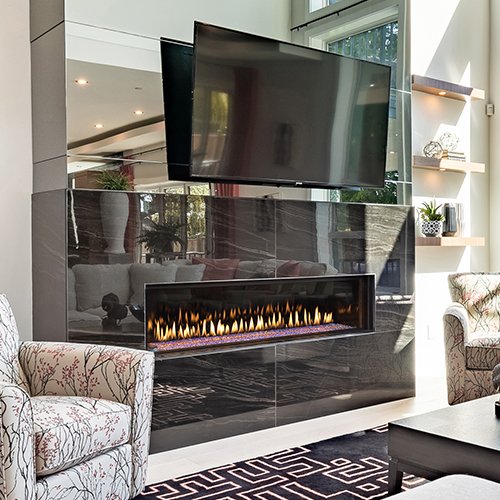
Safety
Home Efficiency
Smaller Footprint
Dimensions of the Fireplace and the Fire-space
In addition to the client’s personal preferences, the physical size of the fireplace itself should be considered when speccing out an installation. For instance, a space with a long wall and shorter ceilings might be more suited to a linear fireplace. Whereas taller rooms or a squared wall might be more appropriate with a traditional shaped fireplace.
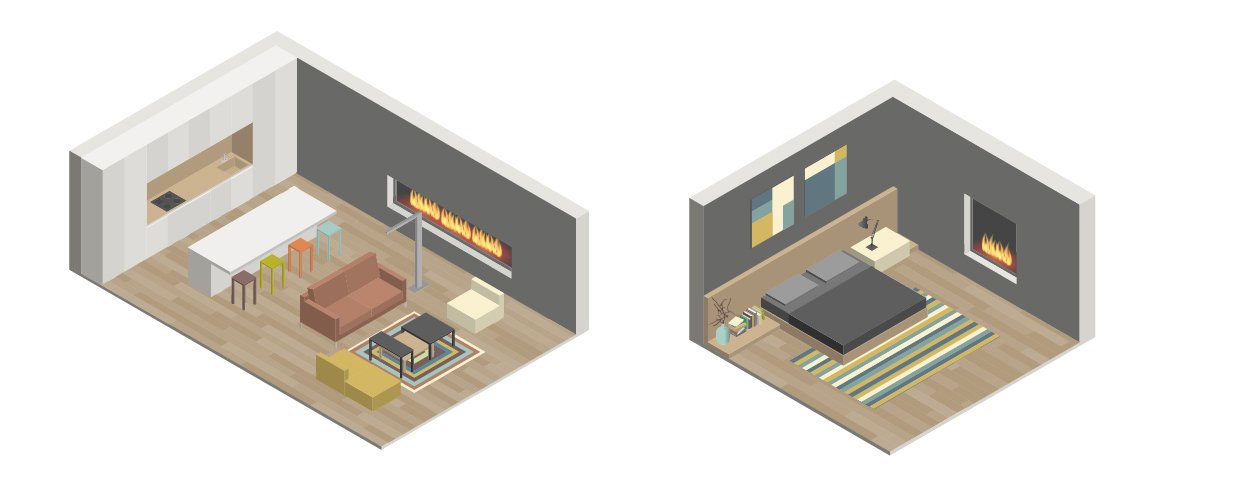
Dimensions for Retrofits
When the proposition of a retrofit comes into light, significant time and money can be saved if attention is paid to the goal of having the least amount of adjustments made from the exiting installation to the new one. This can be done in a few ways…
Vent Height
For rear vented units, if the vent center on the new unit is the same (within 1/2″) as the old unit, then a lot of installation headaches can be avoided. Generally the same vent exit point can be used as long as new venting and termination is used. Pay close attention to building codes that might have changed since the time the last fireplace was installed, as other adjustments might need to be made to the framing structure.
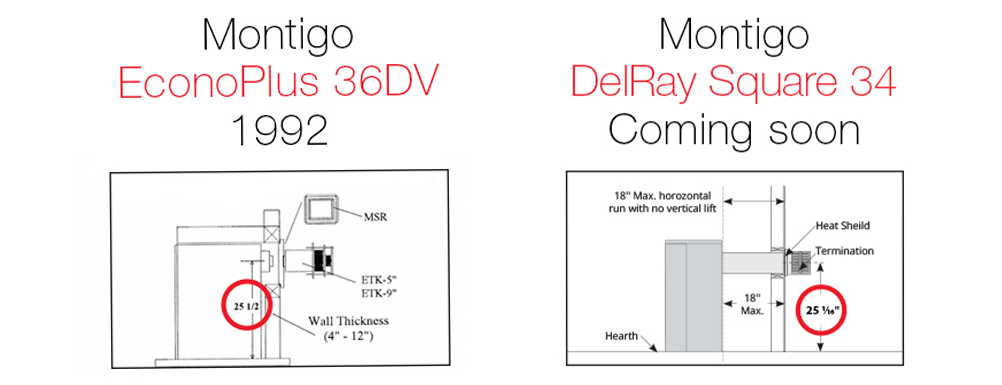
Vent Size
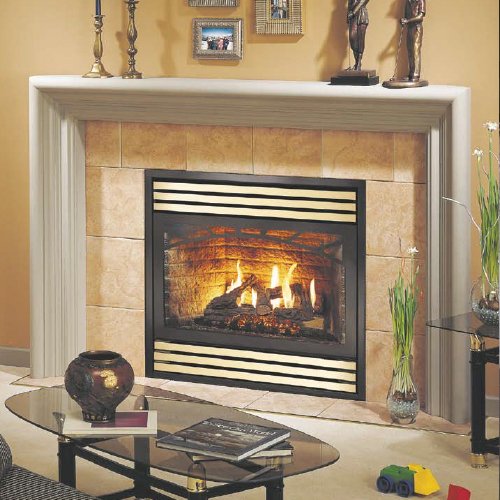
C34-DV (our awkward high school photo)
Sorry, there’s just no saving your beige hearth tile
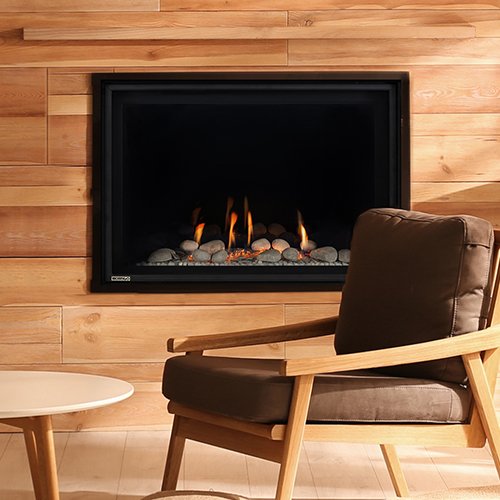
DRSQ38 DelRay Square
No more gold louvers!


